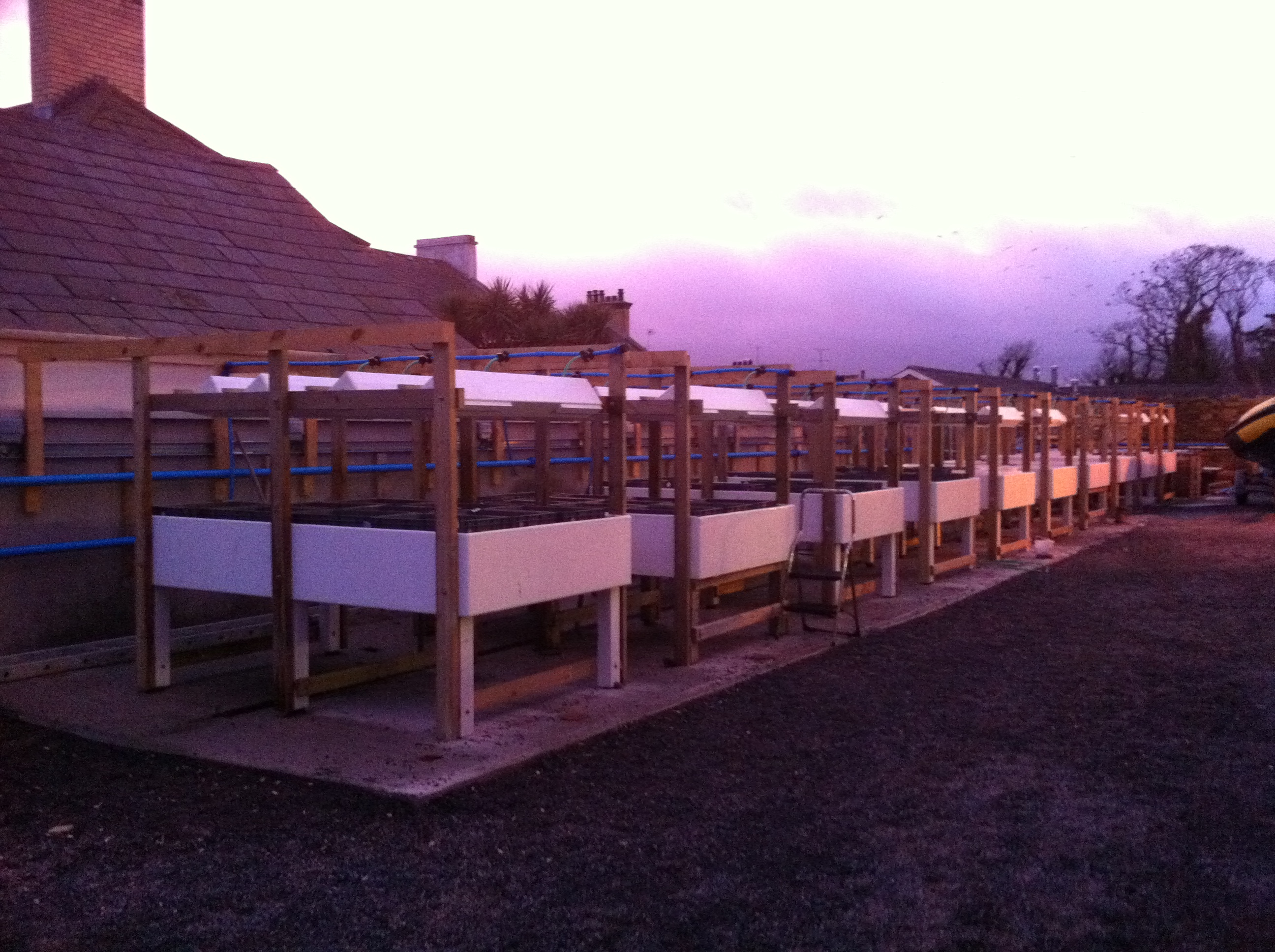Methods
Summary
I will establish a series of artificial ecosystems within the large mesocosm facility at Queen's Marine Lab, Portaferry (http://www.qub.ac.uk/research-centres/QueensUniver...). Sediments will be sampled from a local field site and transferred into forty 45 L mesocosms at the mesocosm facility. Surface dwelling megafauna will be removed and treatments be established manipulating the abundance of the shore crab (Carcinus maenas) from natural abundances (determined by field survey) down to extinction (0). Mesocosm experiments will be replicated (n=5), and the development of the microalgal biofilm and changes in sediment oxygen penetration monitored throughout the experiment. At the end of each incubation, the crabs will be removed and the sediments will be sampled using 8 cm diameter push cores and horizontally sectioned for analysis of the sediment macrofaunal assemblage, microbial assemblage and geochemistry.
Sample processing and analysis. Macrofauna will be identified to the lowest taxonomic level (genus/species where possible) and assemblage structure determined for each mesocosm. Macrofaunal biomass and diet will then be determined for each mesocosm using state of the art isotope ratio mass-spectroscopy (IRMS) techniques. Changes in bulk sediment geochemistry (total organic carbon and total nitrogen) and the isotopic signatures of the sediment will be determined by IRMS. This will provide a proxy for crab-driven changes in sediment organic matter content and bioturbation. Differences in microbial community between treatments will be tested using compound- specific gas chromatography IRMS to the concentration and isotopic signatures of polar lipid fatty acids (PLFAs). PLFAs are a biomarker for the microbial community, which allow contributions of bacteria, fungi and microalgae to biomass and metabolism to be quantified.
Food web modelling will be carried out using linear inverse modelling (LIM) techniques, to reconstruct carbon/energy flows and examine how changes in crab abundance affect these. By applying this modelling approach it will be possible to test how changes in crab abundance affect the carbon cycling pathways and linkages between different organismal groups within a coastal sediment ecosystem.

Protocols
This project has not yet shared any protocols.